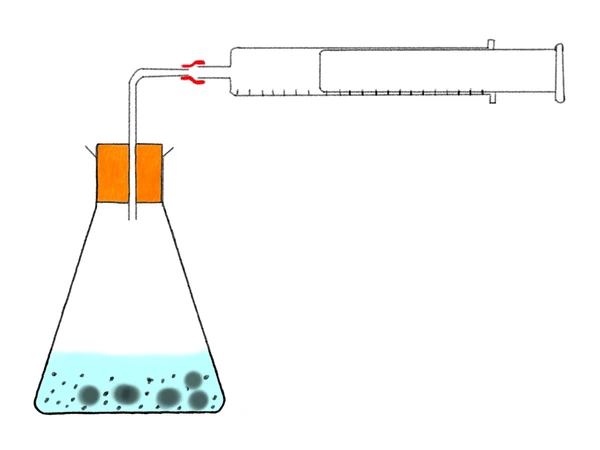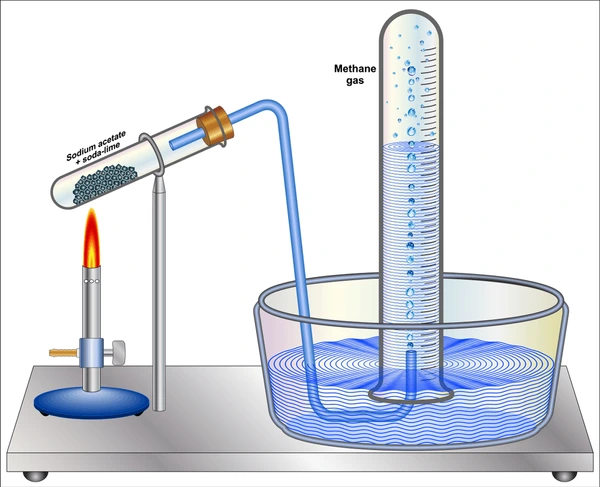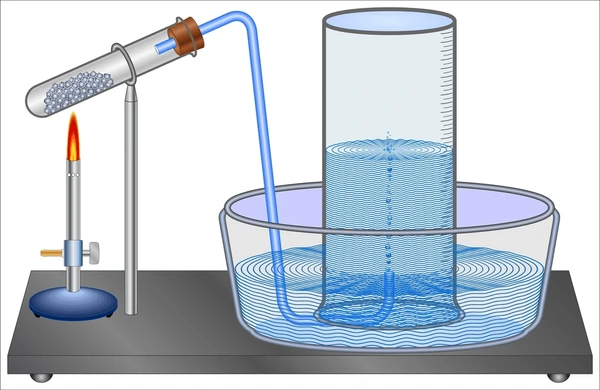Gas collection is a crucial technique in chemistry experiments, especially in the study of gas laws, reactions of metals with acids, and decomposition reactions. A well-assembled gas collection apparatus not only ensures accurate results but also enhances safety in the lab. In this comprehensive article, we delve deep into the construction, functionality, types, and best practices for using gas collection apparatus in a scientific setup.
Introduction to Gas Collection Apparatus
A gas collection apparatus is a laboratory setup used to capture gases produced during chemical reactions. Depending on the type of gas and the nature of the experiment, various methods and equipment may be employed to collect gases safely and effectively.
Key Components of a Gas Collection Apparatus
Understanding the essential components of a gas collection setup allows for better assembly and more accurate experimentation. Below are the primary components involved:
- Reaction vessel (such as a conical flask or test tube)
- Delivery tube to transport gas
- Water trough or pneumatic trough for the water displacement method
- A gas jar or measuring cylinder to collect the gas
- Rubber stopper or cork with a hole for the delivery tube
- Clamp and stand to hold the apparatus in position
Methods of Gas Collection

There are three main methods commonly used to collect gases in the laboratory. The choice of method depends on the solubility and density of the gas.
1. Collection Over Water (Water Displacement Method)
This is the most common method employed when the gas has low or negligible solubility in water, such as oxygen or hydrogen.
Procedure:
- Fill a gas jar or graduated cylinder with water and invert it in a water trough.
- Connect a delivery tube from the reaction vessel to the submerged mouth of the collecting jar.
- As the gas is produced, it displaces the water in the jar.
Advantages:
- Simple and cost-effective
- Suitable for a wide range of gases
Disadvantages:
- Not suitable for water-soluble gases like ammonia or HCl
2. Downward Delivery (Air Displacement)
This method is suitable for gases heavier than air, such as chlorine or sulfur dioxide.
Procedure:
- Position a gas jar upright.
- Insert the delivery tube at the top of the jar.
- The gas flows down and displaces the air inside due to its higher density.
Advantages:
- Ideal for collecting dense gases
- No need for water
Disadvantages:
- Requires careful handling to prevent gas escape
3. Upward Delivery
Used for gases lighter than air, such as ammonia.
Procedure:
- The gas jar is placed upside down.
- The delivery tube enters from below, allowing the gas to rise and displace the air.
Advantages:
- Best for collecting light gases
- Simple setup
Disadvantages:
- Not suitable for gases heavier than air
Use of Gas Syringe as a Gas Collection Apparatus:

A gas syringe is a device used to accurately collect and measure the volume of gas generated during a chemical reaction. It features a graduated barrel and a movable plunger, enabling precise volume measurements. This apparatus is particularly suitable for experiments that produce small to moderate amounts of gas and is commonly used to track reaction rates or compare the volumes of gases released.
Applications of Gas Collection Apparatus
The gas collection apparatus is employed in a wide range of laboratory experiments, including:
- Combustion reactions: To study oxygen consumption
- Metal-acid reactions: For generating hydrogen
- Thermal decomposition: Collection of oxygen from potassium chlorate
- Gas law experiments: Boyle’s and Charles’s law demonstrations
- Photosynthesis experiments: Collection of oxygen from aquatic plants
Understanding which gas collection method to use in each of these applications is vital for achieving accurate experimental results.
Safety Measures in Using Gas Collection Apparatus
Working with gases can pose several safety risks, especially if the gases are toxic, flammable, or reactive. Here are essential safety precautions:
- Always conduct gas collection in a well-ventilated lab or under a fume hood.
- Avoid open flames when collecting flammable gases like hydrogen or methane.
- Use clamps and stands to secure the apparatus.
- Inspect all connections for leaks before commencing the experiment.
- Wear appropriate personal protective equipment (PPE), including gloves and goggles.
- Ensure that all glassware is free of cracks to avoid breakage under pressure.
Troubleshooting Common Issues
Even with careful setup, certain issues may arise during gas collection:
1. Gas Escaping from the Apparatus

- Solution: Check for loose connections or improper sealing with rubber stoppers.
2. Water Backflow into Reaction Vessel
- Solution: Ensure the delivery tube is not submerged too deeply and consider using a non-return valve.
3. Incomplete Reaction
- Solution: Confirm that the reactants are fresh and in the correct ratio.
Tips for Accurate Gas Collection
- Always start with a dry and clean apparatus to prevent contamination.
- Use graduated gas collection jars for more precise measurements.
- Label all containers and jars to avoid confusion between different gases.
- If measuring volume, ensure that readings are taken at eye level to avoid parallax error.
Innovations in Gas Collection Techniques
Modern laboratories are now incorporating digital gas sensors and automated gas sampling systems. These setups reduce human error and provide real-time data for analysis. Additionally, 3D-printed apparatus components are becoming more popular for custom setups in advanced research labs.
Conclusion
A well-understood and properly assembled gas collection apparatus is the backbone of many chemistry experiments. Whether using the water displacement method for oxygen, downward delivery for chlorine, or upward delivery for ammonia, the key lies in choosing the right method based on gas properties and ensuring airtight, safe, and precise setups. With attention to detail and safety, anyone can master the art of gas collection in a laboratory setting.
What is a Gas Collection Apparatus?
Gas collection is a crucial technique in chemistry experiments, especially in the study of gas laws, reactions of metals with acids, and decomposition reactions. A well-assembled gas collection apparatus not only ensures accurate results but also enhances safety in the lab. In this comprehensive article, we delve deep into the construction, functionality, types, and best practices for using gas collection apparatus in a scientific setup.
A gas collection apparatus is a laboratory setup used to capture gases produced during chemical reactions. Depending on the type of gas and the nature of the experiment, various methods and equipment may be employed to collect gases safely and effectively.
Key Components of a Gas Collection Apparatus
Understanding the essential components of a gas collection setup allows for better assembly and more accurate experimentation. Below are the primary components involved:
Reaction vessel (such as a conical flask or test tube)
Delivery tube to transport gas
Water trough or pneumatic trough for the water displacement method
A gas jar or measuring cylinder to collect the gas
Rubber stopper or cork with a hole for the delivery tube
Clamp and stand to hold the apparatus in position
Methods of Gas Collection
There are three main methods commonly used to collect gases in the laboratory. The choice of method depends on the solubility and density of the gas.
1. Collection Over Water (Water Displacement Method)
This is the most common method employed when the gas has low or negligible solubility in water, such as oxygen or hydrogen.
Procedure:
Fill a gas jar or graduated cylinder with water and invert it in a water trough.
Connect a delivery tube from the reaction vessel to the submerged mouth of the collecting jar.
As the gas is produced, it displaces the water in the jar.
Advantages:
Simple and cost-effective
Suitable for a wide range of gases
Disadvantages:
Not suitable for water-soluble gases like ammonia or HCl
2. Downward Delivery (Air Displacement)
This method is suitable for gases heavier than air, such as chlorine or sulfur dioxide.
Procedure:
Position a gas jar upright.
Insert the delivery tube at the top of the jar.
The gas flows down and displaces the air inside due to its higher density.
Advantages:
Ideal for collecting dense gases
No need for water
Disadvantages:
Requires careful handling to prevent gas escape
3. Upward Delivery
Used for gases lighter than air, such as ammonia.
Procedure:
The gas jar is placed upside down.
The delivery tube enters from below, allowing the gas to rise and displace the air.
Advantages:
Best for collecting light gases
Simple setup
Disadvantages:
Not suitable for gases heavier than air
Applications of Gas Collection Apparatus
The gas collection apparatus is employed in a wide range of laboratory experiments, including:
Combustion reactions: To study oxygen consumption
Metal-acid reactions: For generating hydrogen
Thermal decomposition: Collection of oxygen from potassium chlorate
Gas law experiments: Boyle’s and Charles’s law demonstrations
Photosynthesis experiments: Collection of oxygen from aquatic plants
Understanding which gas collection method to use in each of these applications is vital for achieving accurate experimental results.
Safety Measures in Using Gas Collection Apparatus
Working with gases can pose several safety risks, especially if the gases are toxic, flammable, or reactive. Here are essential safety precautions:
Always conduct gas collection in a well-ventilated lab or under a fume hood.
Avoid open flames when collecting flammable gases like hydrogen or methane.
Use clamps and stands to secure the apparatus.
Inspect all connections for leaks before commencing the experiment.
Wear appropriate personal protective equipment (PPE), including gloves and goggles.
Ensure that all glassware is free of cracks to avoid breakage under pressure.
Troubleshooting Common Issues
Even with careful setup, certain issues may arise during gas collection:
1. Gas Escaping from the Apparatus
Solution: Check for loose connections or improper sealing with rubber stoppers.
2. Water Backflow into Reaction Vessel
Solution: Ensure the delivery tube is not submerged too deeply and consider using a non-return valve.
3. Incomplete Reaction
Solution: Confirm that the reactants are fresh and in the correct ratio.
Tips for Accurate Gas Collection
Always start with a dry and clean apparatus to prevent contamination.
Use graduated gas collection jars for more precise measurements.
Label all containers and jars to avoid confusion between different gases.
If measuring volume, ensure that readings are taken at eye level to avoid parallax error.
Innovations in Gas Collection Techniques
Modern laboratories are now incorporating digital gas sensors and automated gas sampling systems. These setups reduce human error and provide real-time data for analysis. Additionally, 3D-printed apparatus components are becoming more popular for custom setups in advanced research labs.
Conclusion
A well-understood and properly assembled gas collection apparatus is the backbone of many chemistry experiments. Whether using the water displacement method for oxygen, downward delivery for chlorine, or upward delivery for ammonia, the key lies in choosing the right method based on gas properties and ensuring airtight, safe, and precise setups. With attention to detail and safety, anyone can master the art of gas collection in a laboratory setting.
What are the safety measures for the gas collection apparatus?
Working with gases can pose several safety risks, especially if the gases are toxic, flammable, or reactive. Here are essential safety precautions:
Always conduct gas collection in a well-ventilated lab or under a fume hood.
Avoid open flames when collecting flammable gases like hydrogen or methane.
Use clamps and stands to secure the apparatus.
Inspect all connections for leaks before commencing the experiment.
Wear appropriate personal protective equipment (PPE), including gloves and goggles.
Ensure that all glassware is free of cracks to avoid breakage under pressure.
What is the apparatus used to collect gas?
Gas collection is a crucial technique in chemistry experiments, especially in the study of gas laws, reactions of metals with acids, and decomposition reactions. A well-assembled gas collection apparatus not only ensures accurate results but also enhances safety in the lab. In this comprehensive article, we delve deep into the construction, functionality, types, and best practices for using gas collection apparatus in a scientific setup.
A gas collection apparatus is a laboratory setup used to capture gases produced during chemical reactions. Depending on the type of gas and the nature of the experiment, various methods and equipment may be employed to collect gases safely and effectively.
Key Components of a Gas Collection Apparatus
Understanding the essential components of a gas collection setup allows for better assembly and more accurate experimentation. Below are the primary components involved:
Reaction vessel (such as a conical flask or test tube)
Delivery tube to transport gas
Water trough or pneumatic trough for the water displacement method
A gas jar or measuring cylinder to collect the gas
Rubber stopper or cork with a hole for the delivery tube
Clamp and stand to hold the apparatus in position
Methods of Gas Collection
There are three main methods commonly used to collect gases in the laboratory. The choice of method depends on the solubility and density of the gas.
1. Collection Over Water (Water Displacement Method)
This is the most common method employed when the gas has low or negligible solubility in water, such as oxygen or hydrogen.
Procedure:
Fill a gas jar or graduated cylinder with water and invert it in a water trough.
Connect a delivery tube from the reaction vessel to the submerged mouth of the collecting jar.
As the gas is produced, it displaces the water in the jar.
Advantages:
Simple and cost-effective
Suitable for a wide range of gases
Disadvantages:
Not suitable for water-soluble gases like ammonia or HCl
2. Downward Delivery (Air Displacement)
This method is suitable for gases heavier than air, such as chlorine or sulfur dioxide.
Procedure:
Position a gas jar upright.
Insert the delivery tube at the top of the jar.
The gas flows down and displaces the air inside due to its higher density.
Advantages:
Ideal for collecting dense gases
No need for water
Disadvantages:
Requires careful handling to prevent gas escape
3. Upward Delivery
Used for gases lighter than air, such as ammonia.
Procedure:
The gas jar is placed upside down.
The delivery tube enters from below, allowing the gas to rise and displace the air.
Advantages:
Best for collecting light gases
Simple setup
Disadvantages:
Not suitable for gases heavier than air
Applications of Gas Collection Apparatus
The gas collection apparatus is employed in a wide range of laboratory experiments, including:
Combustion reactions: To study oxygen consumption
Metal-acid reactions: For generating hydrogen
Thermal decomposition: Collection of oxygen from potassium chlorate
Gas law experiments: Boyle’s and Charles’s law demonstrations
Photosynthesis experiments: Collection of oxygen from aquatic plants
Understanding which gas collection method to use in each of these applications is vital for achieving accurate experimental results.
Safety Measures in Using Gas Collection Apparatus
Working with gases can pose several safety risks, especially if the gases are toxic, flammable, or reactive. Here are essential safety precautions:
Always conduct gas collection in a well-ventilated lab or under a fume hood.
Avoid open flames when collecting flammable gases like hydrogen or methane.
Use clamps and stands to secure the apparatus.
Inspect all connections for leaks before commencing the experiment.
Wear appropriate personal protective equipment (PPE), including gloves and goggles.
Ensure that all glassware is free of cracks to avoid breakage under pressure.
Troubleshooting Common Issues
Even with careful setup, certain issues may arise during gas collection:
1. Gas Escaping from the Apparatus
Solution: Check for loose connections or improper sealing with rubber stoppers.
2. Water Backflow into Reaction Vessel
Solution: Ensure the delivery tube is not submerged too deeply and consider using a non-return valve.
3. Incomplete Reaction
Solution: Confirm that the reactants are fresh and in the correct ratio.
Tips for Accurate Gas Collection
Always start with a dry and clean apparatus to prevent contamination.
Use graduated gas collection jars for more precise measurements.
Label all containers and jars to avoid confusion between different gases.
If measuring volume, ensure that readings are taken at eye level to avoid parallax error.
Innovations in Gas Collection Techniques
Modern laboratories are now incorporating digital gas sensors and automated gas sampling systems. These setups reduce human error and provide real-time data for analysis. Additionally, 3D-printed apparatus components are becoming more popular for custom setups in advanced research labs.
Conclusion
A well-understood and properly assembled gas collection apparatus is the backbone of many chemistry experiments. Whether using the water displacement method for oxygen, downward delivery for chlorine, or upward delivery for ammonia, the key lies in choosing the right method based on gas properties and ensuring airtight, safe, and precise setups. With attention to detail and safety, anyone can master the art of gas collection in a laboratory setting.
